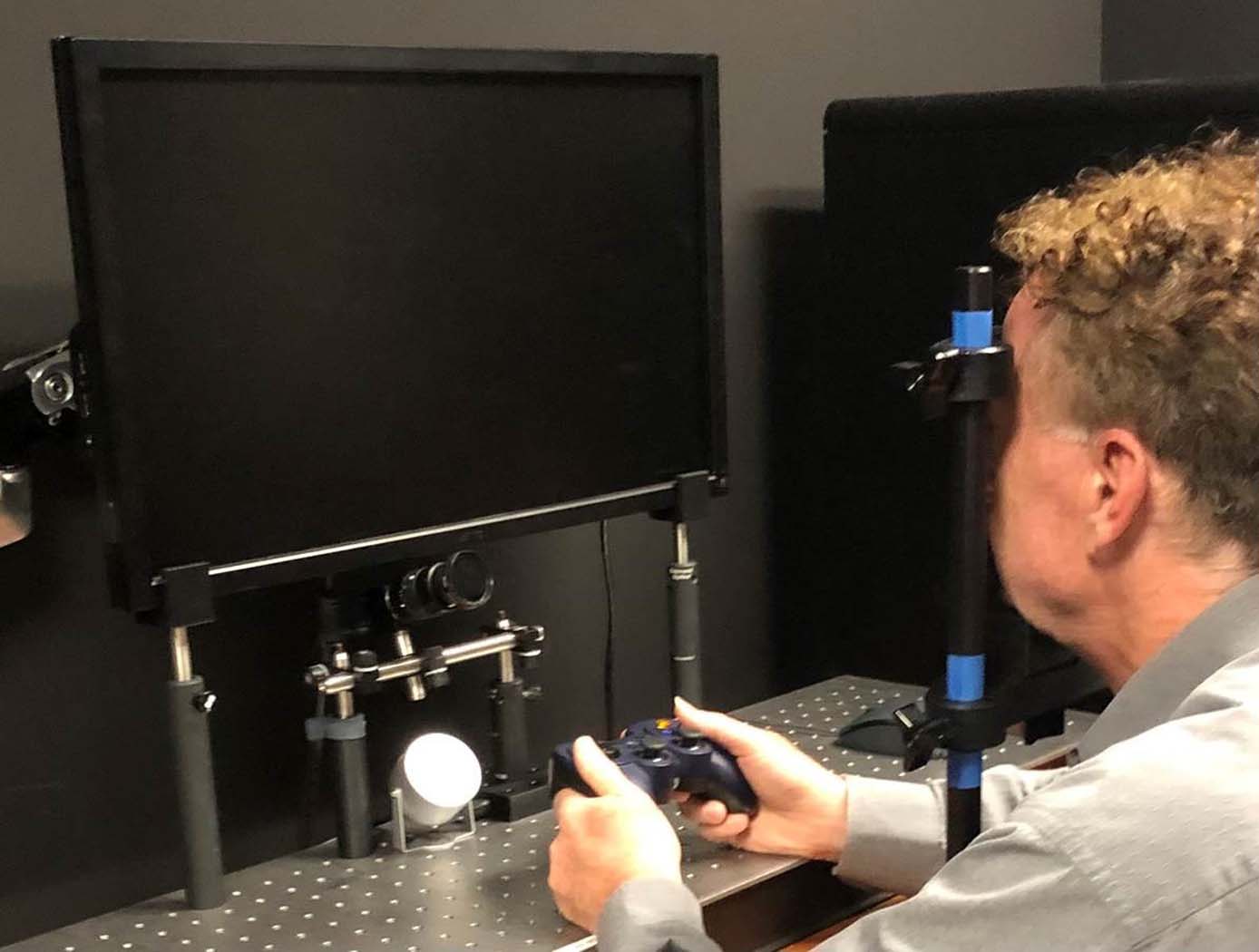Search
Health Medicine and Biotechnology

Oculometric Testing for Detecting/Characterizing Mild Neural Impairment
To assess various aspects of dynamic visual and visuomotor function including peripheral attention, spatial localization, perceptual motion processing, and oculomotor responsiveness, NASA developed a simple five-minute clinically relevant test that measures and computes more than a dozen largely independent eye-movement-based (oculometric) measures of human neural performance. This set of oculomotor metrics provide valid and reliable measures of dynamic visual performance and may prove to be a useful assessment tool for mild functional neural impairments across a wide range of etiologies and brain regions. The technology may be useful to clinicians to localize affected brain regions following trauma, degenerative disease, or aging, to characterize and quantify clinical deficits, to monitor recovery of function after injury, and to detect operationally-relevant altered or impaired visual performance at subclinical levels. This novel system can be used as a sensitive screening tool by comparing the oculometric measures of an individual to a normal baseline population, or from the same individual before and after exposure to a potentially harmful event (e.g., a boxing match, football game, combat tour, extended work schedule with sleep disruption, blast or toxic exposure, space mission), or on an ongoing basis to monitor performance for recovery to baseline. The technology provides set of largely independent metrics of visual and visuomotor function that are sensitive and reliable within and across observers, yielding a signature multidimensional impairment vector that can be used to characterize the nature of a mild deficit, not just simply detect it. Initial results from peer-reviewed studies of Traumatic Brain Injury, sleep deprivation with and without caffeine, and low-dose alcohol consumption have shown that this NASA technology can be used to assess subtle deficits in brain function before overt clinical symptoms become obvious, as well as the efficacy of countermeasures.
Health Medicine and Biotechnology

Expanded COBRA Oculometrics (ECO) to Include Perimetry and Directional Assessment of Visual and Visuomotor Performance
Expanded COBRA Oculometrics (ECO) expands the oculometric assessment into the peripheral visual field and sub-divides the visual field into sub-regions defined by their eccentricity (ring) and angular range (sector) for more direct comparison with current state-of-the-art clinical imagining (e.g., OCT (Optical Coherence Tomography)) and functional testing (e.g., perimetry) methodologies. ECO improves on COBRA in two ways, 1) ECO probes multiple rings at multiple eccentricities (nominally at ~3 and ~6 deg of eccentricity to correspond to classic OCT imaging measures) and 2) ECO subdivides the conventional COBRA analysis into angular sectors (nominally into Nasal, Temporal, Superior, and Inferior quadrants again to correspond to classic OCT imaging measures but also potentially into more refined octants) to sub-sample the retina (monocularly) or the visual field (binocularly), thus parceling the data into smaller subregions organized in polar coordinates to better correspond to classic OCT imaging and other clinical imaging measures. This enables ECO to detect spatially localized impairments that would otherwise be blurred out by larger healthy regions of the retina/brain and allows for direct comparison with clinical OCT results and other clinical imaging systems. ECO sectors/rings could be tailored to enable comparison with brain MRI/A (Magnetic Resonance Imaging/Angiography) or CAT (Computer Aided Tomography) commonly used in neurology clinics so that the structural damage or pathology revealed by these standard imaging techniques can be correlated to actual function loss in corresponding sub-regions of the visual field in support of both clinical and research applications.



